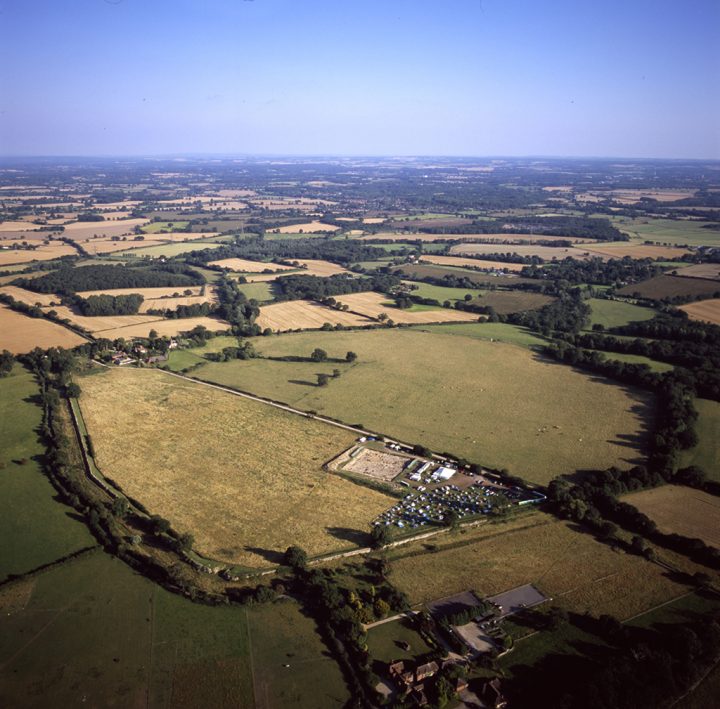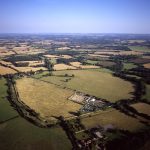Science at Silchester
An enormous amount of prospective and post-excavation work goes on behind the scenes of the more visible excavation seasons. All the samples taken from our sites have a purpose and once they have been processed, they are assessed and, if suitable, analysed in order to give us far more detail on life and landscape than possible through excavation of finds and features alone.
Prospection
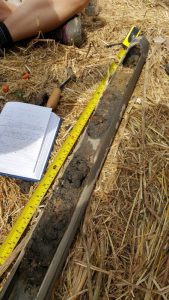
There are a variety of scientific techniques available to help us prospect for new sites in the wider Silchester landscape. We have used specialist interpretation of aerial data (photographic and Lidar) over the entire area, with great success as described further here. Our in-house team and also our partners at Historic England have then examined selected sites identified in more detail with extensive geophysical surveys, using hand-held and towed systems including gradiometer, ground penetrating radar and caesium magnetometers. These have provided different types of complementary subsurface site data in different locations depending on substrate and depth of burial.
Coring has been used to great effect alongside excavation to recover sediments from the more inaccessible areas of our sites such as deep ditches, wells and high banks but also away from the sites in order to look at activity in the wider contemporary landscape and to allow a preliminary evaluation of potential new sites. The Silchester team along with colleagues from QUEST use a powered vibro-corer to take continuous columns of sediment to depths up to 10m for geoarchaeological analysis and sub sampling.
Sampling & Processing
On-site collection of bulk samples of up to 40 litres is routinely undertaken for specific contexts in order to recover remains suitable for macrofossil and artefact analyses. These are carefully washed using a flotation tank and the cleaned remains are then collected on a series of sieves in order to separate them into size fractions. The so-called flots (floating, organic material such as charcoal) and residues (non-floating heavy material such as natural gravels, worked flint and pottery) are then sorted by our team, extracting all the different material types of interest ready for assessment.
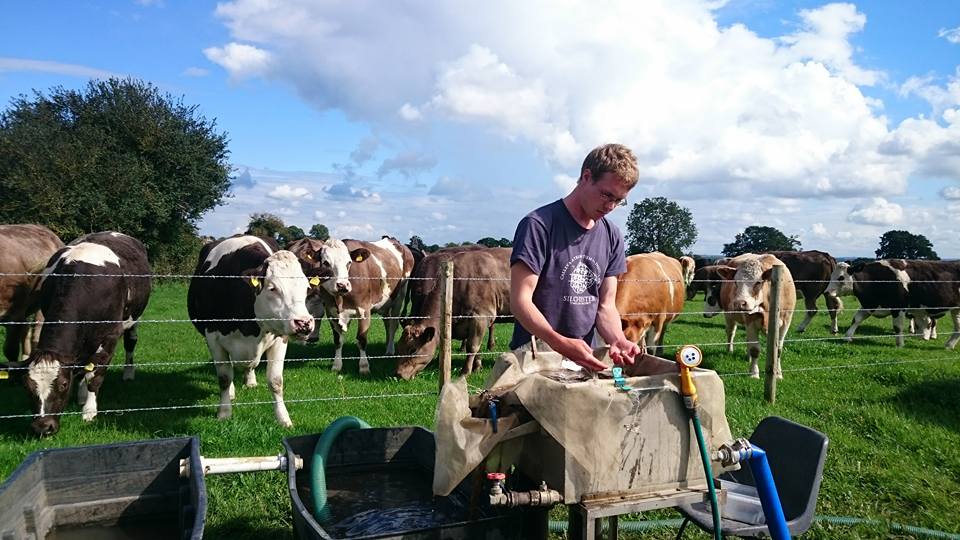
Collection of monoliths, kubienas and spot samples is aimed at recovery of material from excavated archaeological features and layers in order to address particular research questions and to provide continuous sequences of soils and sediments suitable for subsampling for microfossils and stratified material suitable for precise scientific dating.
Assessment and analysis
There are a whole host of environmental remains or “proxies” which are naturally occurring materials which either occurred at the site at the time of occupation, and therefore tell us about environmental conditions and climate at the time, or were deliberately selected, altered or managed by people and therefore tell us about lifestyle, agriculture, fuel use and landscape management. They are extracted through a variety of chemical and mechanical laboratory procedures, and include the following:
Human Remains
Human remains are our most direct link to past communities. Those recovered from our sites are treated with respect and their bones have stories to tell. These include the nature of funerary practices, from cremation and interment with high status imported pottery goods of a Late Iron Age individual at Windabout Copse to interment of neonates and infants under the houses within the Silchester walls, keeping them within the home. Specialist examination of the individuals can tell us about past disease and pathology, of privation and malnutrition. Laboratory analysis can include isotopic studies on bones and teeth, which tell us about diet, and potentially area of origin of the individual and/ or migration in their lifetime based on comparison with the isotopic signatures of different geologies and marine vs terrestrial signatures.

Animal Bone
Animals, as now, have had a complex and multi-faceted relationship with humans in the past. Vast quantities of sheep/ goat, cow and pig bone have been recovered from the excavations at Insula IX and III. The relative proportions of species and indeed body parts and cut marks for each population tells us about their purpose, eg as meat, dairy products and for hide , and the process of butchery and food preparation, while examination of the age structure tells us about seasonality of site use and grazing and of livestock management for different purposes. Other domestic animals at the site include chicken, horse and dogs, the latter two rarely showing evidence that they were eaten. Some had eventful lives and deaths, as attested by healed fractures and, in some cases, cut marks attributed to skinning. However, some were clearly pets, including a rare miniature Late Iron Age dog buried under the foundation of the hall in Insula IX.
Plant macrofossils
Plants were a fundamental part of life at Silchester. They grew naturally at and around the site, were planted within the walls (for instance herbs and ornamentals), were managed and exploited in the wider area (eg through cyclical woodland management to provide fuel and building material) and were brought to the site for processing and consumption from local fields and from far further away as exotic foodstuffs. Only a small percentage of their remains have survived since their use in the Iron Age and Roman occupation, the rest have rotted away, including most of the timber-framed buildings. Occasionally we find waterlogged or mineralised plant remains and wood in particular contexts such as cesspits, latrines and wells where the preservation environment is just right, but the remains are dominated by charred seeds, grains and wood charcoal. Nevertheless, the assemblages of these are large and their analysis has much to tell us about human-plant relationships, agriculture, woodland management, landscape and diet. One aspect of particular interest is the presence of the remains of non-native imported foods and flavourings, including whole olives, caraway, dill and coriander showing Romanised tastes before the main arrival of the Romans.
Insects and molluscs
Insects and molluscs are of archaeological interest because they have very specific and narrow environmental requirements and therefore the presence of particular types can tell us about a number of detailed aspects of landscape and lifestyle. For instance, the insect assemblage from Well 8328 at Insula IX showed that substantial accumulations of animal bedding and dung occurred nearby, some of which had been dumped in the well.
Microfossils
Given the right conditions, microscopic remains of plant and animals such as pollen, phytoliths (the silica based skeletal remains of grasses), testate amoebae (protozoa used in the reconstruction of past changes in surface wetness and mire formation), microcharcoal and non-pollen palynomorphs such as fungal spores, can be preserved for many millennia. Once extracted and concentrated from the layer they were deposited in, they can be identified to genus or species microscopically. Comparison of the types found with their known modern ecological requirements can provide a host of information on past habitats and changes to them, activities such as grazing and foddering of animals, landscape clearance and burning and arable farming.
For instance, at Pond Farm hillfort, analysis of pollen from the base of the encircling ditch indicates that the Late Iron Age monument was built in an area dominated by open woodland but with some areas already having been substantially cleared and supporting open heathland, but with no evidence for cereal cultivation close to the site until the Roman period.
Sediments
Analysis of gross sediments, including those collected through coring and by monolith on and off site is carried out by the project geoarchaeologist, who describes them in detail, teasing out minor changes on sedimentation. These can be attributed to, for instance, colluviation (hillwash) and alluvial (river) activity, accumulation of organic materials under marsh condition or the development of stable soils suitable for settlement. This can tell us much about past landscape changes and resources available to humans as well as giving a framework and context for the archaeological remains within them, informing us how they got to the site. Geoarchaeological analysis of sediments associated with the Silchester Linears has allowed us to identify a direct relationship of the monuments with water bodies. For example, in the case of the Little London Linear within Pamber Forest, analysis demonstrated their ditches were cut directly into an existing palaeochannel and that they continued to house flowing water in their lifetime.
Micromorphology is used to look microscopically at smaller layers including floors and soils to examine the activities that occurred during their lifetime and modes of deposition at the site. For instance, the use of soil micromorphology inside and outside the Early Roman buildings ERTB 1 & 2 at Insula IX has enabled hearths and rake-out layers to be identified, and the layout, modifications to the layout and position of internal walls and structural elements to be mapped even though the original materials have decayed. The presence or absence of roofs or partial roofs could be examined and identification of trampled layers has allowed examination of how people moved through these buildings, where doorways were placed and how these changed over time.
Geochemical analysis involves the examination of mineralogy and chemistry of selected spot samples and archaeological materials from the site. It relies on techniques such as XRay Diffraction (XRD), XRay Fluorescence (XRF) and Mobile Metal Ions (MMI) analysis. At Silchester we use this for targeted questions, for instance raised levels of phosphorus (from urine) in particular areas within the walls indicate the onsite housing of livestock. Raised lead levels across the Roman town suggest that the inhabitants caused environmental pollution by metalworking, while small pockets of raised precious metal concentrations in the soil indicate gold and silver working within specific craft areas of the town.
Other chemical and spectroscopic analyses include lipid and residue analysis, Fourier Transform Infrared Spectroscopy (FTIR) and Inductively Coupled Plasma Mass Spectrometry (ICPMS) to examine aspects of life such as cooking, use of glues and resins, metalworking and industrial activities. We were also pleased to provide material for the Chicken Project, which demonstrated that animal fats dominated the residues in the Iron Age pottery assemblage at Insula IX.
Radiocarbon dating
Precise dating of activity at the Silchester Environs sites under investigation has been vital to establish their chronological and functional relationships with the main Late Iron Age town or oppidum at Silchester. In some instances, the find of coins or known pottery types is enough to date an individual feature or activity in the main town, but in many cases we need to employ scientific absolute dating techniques. The most useful technique at our disposal, particularly for the rural sites, is AMS radiocarbon dating, which is a measurement of the relative proportions of two forms of carbon (stable 12C and radioactive 14C) in organic matter. During life, plants fix carbon from the air and it then moves through the food chain when eatenIn their lifetime, the ratio of the two forms is the same as atmospheric ratios but once an organism dies, the radioactive carbon (radiocarbon) portion decays at a known rate and its measured level is therefore a reflection of time since the plant or animal died. We choose our plant and bone samples carefully to ensure they represent the event we want to date and they are analysed for us at the SUERC (The Scottish Universities Environmental Research Centre) radiocarbon facility.
We have for instance used radiocarbon dating to learn that the seemingly empty hillfort at Pond Farm was constructed immediately before the inception of the town of Silchester and indeed was unfinished and little used during the Late Iron Age. This leads to questions regarding whether there was a change in settlement focus or whether those who built it made a swift exit when the builders of the town arrived. Radiocarbon determinations have also revealed that the site was then used repeatedly over a very long time, perhaps sporadically, with features of early and late Roman date, 6th-7th century, Medieval and Post Medieval dates.
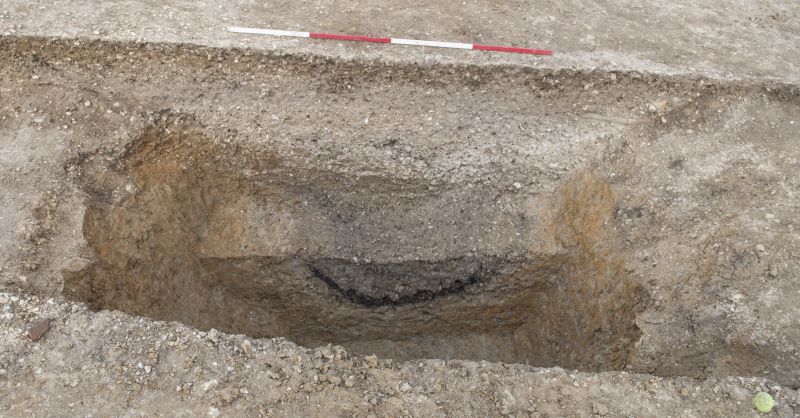
Publication and Archive
The archaeological and environmental materials we recover and the data we generate are not just useful to the project but have relevance to other ongoing studies. Indeed, they may be suitable in the future for research using techniques not yet discovered or applied to archaeology and capable of yielding yet more information. It is our duty therefore to conserve and manage the project archive (both physical and digital) and safeguard it for the future. Our findings are recorded on OASIS and ADS, the artefacts and ecofacts are stabilised, and once we have finished studying them, they are sent to the local museum. In addition, our findings and interpretations continue to be published as a series of books both for the Town Life Project and soon for the Environs project (due 2019 onwards).
The scientific elements of the project are led by Dr Catherine Barnett, with a core team of environmental archaeologists but we also call on a host of other specialists to provide particular expertise. For a list of some of these see Who Are We?
